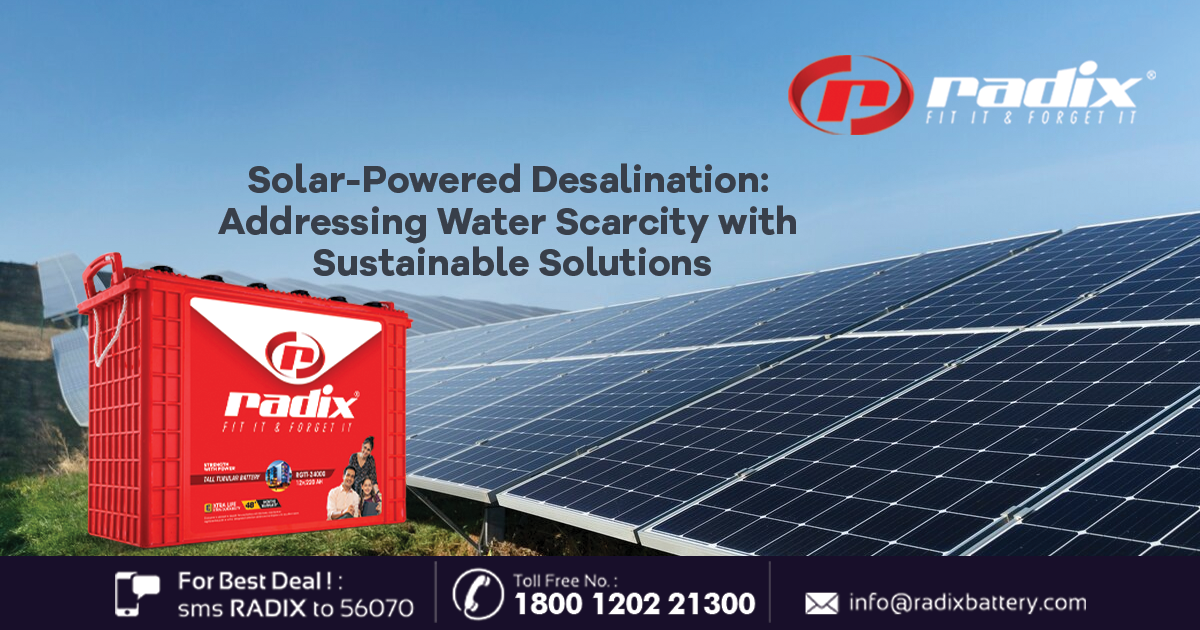Water scarcity is a pressing global challenge, exacerbated by factors like population growth, climate change, and industrial development. Innovative solutions are needed to provide access to clean and safe drinking water. Solar-powered desalination emerges as a promising technology to address this issue sustainably.
Why Solar Power for Water Desalination?
By harnessing the abundant energy of the sun, solar-powered desalination systems offer a sustainable and environmentally friendly method to produce freshwater from seawater or brackish water sources. Unlike traditional desalination methods that rely on fossil fuels or grid electricity, solar desalination reduces carbon emissions and mitigates the impact of climate change. Additionally, solar desalination can be deployed in remote or off-grid areas, providing access to clean water where traditional infrastructure is lacking. With the potential to transform seawater into a valuable resource, solar power desalination offers a path towards water security and resilience in the face of growing water challenges.
Harnessing Solar Energy for Desalination:
Solar-powered desalination utilizes solar energy to power the desalination process, offering a sustainable alternative to traditional energy-intensive methods. This section explores the various solar desalination technologies and their mechanisms.
Photovoltaic (PV) Desalination:
PV desalination systems use solar panels to convert sunlight into electricity, which drives the desalination process. These modular systems are scalable and suitable for remote or off-grid locations, making them ideal for decentralized water supply solutions.
Concentrated Solar Power (CSP) Desalination:
CSP desalination systems utilize mirrors or lenses to concentrate sunlight onto a receiver, generating high temperatures that drive thermal desalination processes like distillation or multi-effect distillation (MED). These systems are efficient for large-scale applications and can provide water for industrial purposes or large communities.
Membrane Distillation (MD) and Reverse Osmosis (RO):
Solar-powered membrane distillation and reverse osmosis systems combine solar thermal energy with membrane technologies to desalinate water. MD utilizes a hydrophobic membrane to separate freshwater vapor from saline water, while RO employs a semi-permeable membrane to remove salts. These systems offer high efficiency and low energy consumption, making them suitable for both small-scale and large-scale applications.
Advantages of Solar-Powered Desalination:
Solar-powered desalination offers several advantages over traditional desalination methods. It reduces reliance on fossil fuels, mitigates greenhouse gas emissions, and provides a sustainable water supply solution. Additionally, solar desalination systems can be deployed in remote or off-grid areas, improving access to clean water for underserved communities.
Challenges and Considerations:
Despite its potential, solar-powered desalination faces challenges such as high initial costs, intermittency of sunlight, and the need for water storage or backup systems during periods of low solar radiation. Overcoming these challenges requires continued research and development, as well as innovative financing mechanisms to make solar desalination more accessible.
Conclusion:
Solar-powered desalination holds immense potential in addressing water scarcity and providing sustainable water supply solutions. By harnessing the abundant energy of the sun, we can transform seawater and brackish water into valuable freshwater resources, ensuring access to clean water for present and future generations. Continued investment and innovation in solar desalination technologies are essential to realizing this vision and achieving water security for all.
Experience uninterrupted power with Radix Solar Battery – your reliable energy solution for a sustainable future. Get yours now and take the first step towards energy independence!



